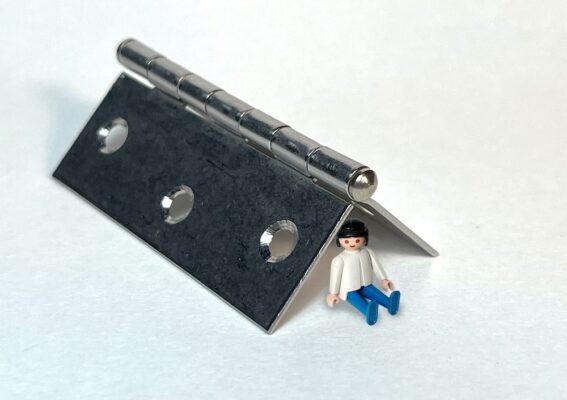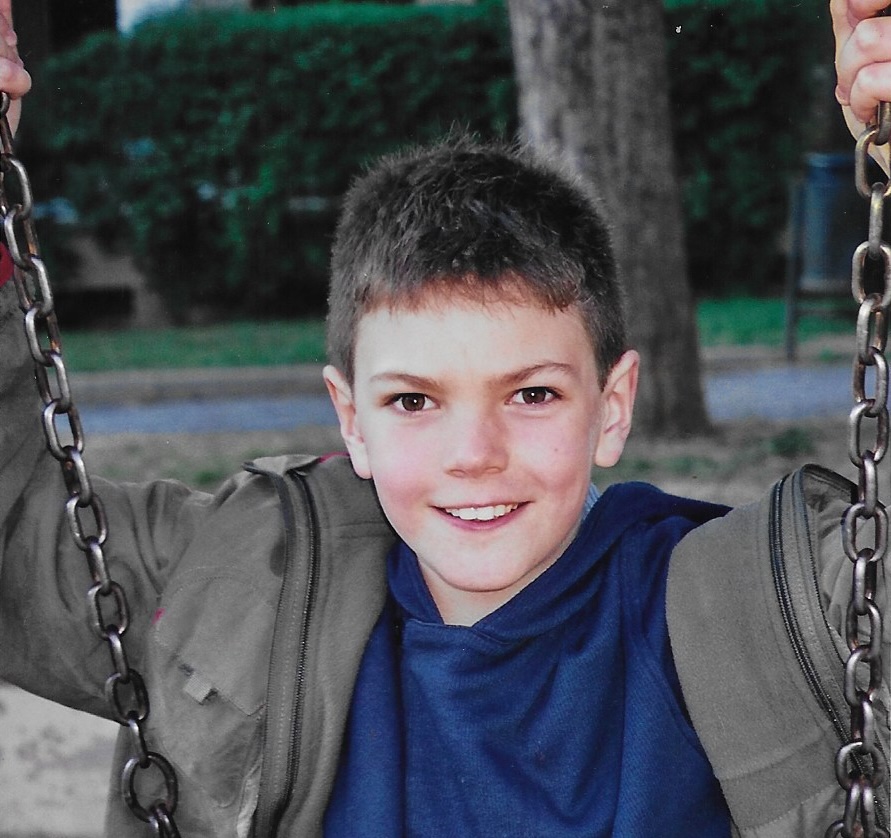Search
To search for an exact match, type the word or phrase you want in quotation marks.
A*DESK has been offering since 2002 contents about criticism and contemporary art. A*DESK has become consolidated thanks to all those who have believed in the project, all those who have followed us, debating, participating and collaborating. Many people have collaborated with A*DESK, and continue to do so. Their efforts, knowledge and belief in the project are what make it grow internationally. At A*DESK we have also generated work for over one hundred professionals in culture, from small collaborations with reviews and classes, to more prolonged and intense collaborations.
At A*DESK we believe in the need for free and universal access to culture and knowledge. We want to carry on being independent, remaining open to more ideas and opinions. If you believe in A*DESK, we need your backing to be able to continue. You can now participate in the project by supporting it. You can choose how much you want to contribute to the project.
You can decide how much you want to bring to the project.

Andrea Fraser reminds us that institutions are not walls or a room full of air. Institutions are the people who inhabit them:
“It’s not a question of being against the institution: We are the institution. It’s a question of what kind of institution we are, what kind of values we institutionalize, what forms of practice we reward, and what kinds of rewards we aspire to.” [1]FRASER, Andrea. “From the Critique of Institutions to an Institution of Critique”. ARTFORUM VOL. 44 n. 1. Pg. 283 September 2005
Are the people that carry out educational tasks within the institutions treated well? Do institutions support the agents that develop the professional practice we call “cultural mediation?” In what conditions is artistic education developed today in the museums and schools of our region?
In the museum
Nearly a century after the emergence of the first education departments in museums and cultural institutions in the US, these spaces still don’t occupy central places in the main decision making of institutions. Cultural mediation remains somewhat of an afterthought in regards to the exhibitions and the curatorial discourses about the main themes, without having any power of opinion or construction, and this can turn mediation into something more reactive than proactive.
The education departments are marginal spaces within the institution’s organization, with a position much lower than what we would have expected after the so-called “educational turn” and with far fewer resources compared to other departments, such as exhibitions, collections, communication and marketing. The mismatch between hegemonic discourses that support cultural institutions (and which justify public budgets) as educational spaces and the resources that are destined for that purpose remains overwhelming.
In addition, the outsourcing and precarious situation of educational services are repeated in virtually all museums, where educators are hired by outside companies and in poor working conditions. The strikes led by the educators in MACBA, Fundació Tàpies, Fundación Joan Miró and other institutions hired by CiutArt in Barcelona between 2016 and 2017 [2]The Workers Assembly demanded of Ciutart, the ICUB and other institutions the following conditions: direct contracting by public and private institutions; indefinite hiring and work times; permanence … Continue reading, despite achieving some salary improvement, failed to end the model of subcontracting and institutional neglect. This also impacts, inevitably, in their work. Training, involvement and preparation will be, inevitably, less than what it could be if the institution offered them more stable jobs and better work conditions.
It is paradoxical how those who directly interact with the public on a daily basis in museums and art centers are not the curators, board members or directors with their legitimating discourse but rather the “museum girls,” those who do public services, and that these are people on the lowest level of the museum’s hierarchical pyramid.
At School
If we then look at schools and institutes we find a very similar hypocrisy. In the high levels of government, those who design the curriculum and resources of public schools speak of multiple intelligences, the importance of arts and culture in compulsory education under the hegemonic framework that up until a few years ago was offered by neuroscience. They are constantly incorporating changes in school curriculums to which teachers must adapt without time to assimilate them. However, subjects such as music and visual arts continue to work as they did 40 years ago (de facto dynamiting the discourses of attention to diversity of cognitive skills). That is to say, when evaluated, they share half of the results with music education.
On the other hand, in Catalonia, arts specialists in schools are still lacking while, by law, all primary schools have specialists for diversity, physical education, music and English [3]Catalonia Decree 175/2022 of September 27, organization of the teaching of basic education. Diari Official of the Generalitat de Catalunya, no. 8762. [Online]. Consultable at: … Continue reading There is also no specific training or jobs in schools or, of course, positions to work in this specialty. They don’t exist. As a result, artistic education continues to be practiced mostly as something “pretty,” “superfluous,” or about “famous artists,” album covers or school posters and murals. The recent Espais C programs developed in Barcelona, such as “The Residency,” which put artists in primary and high schools, should not become substitutes for specialists. This converts a radical, powerful initiative into a mere bandage to deal with this structural lack.
However, those who most defend and practice the importance of the presence of visual arts in compulsory education are the teachers themselves. Teachers recognize and try to reverse this situation with effort and creativity, though with a lack of formation evident in general terms, by generating transversal projects where visual literacy and the presence of the arts is a truly significant and essential learning engine. Jové, as an educator of future teachers, tries to instill this perspective in her students:
“What happens when the arts and contemporary artistic practices, patrimony and territory become the backbone of change and innovation in the schools? Do the arts allow us to develop and define distinct educational and curricular practices?”[4]JOVÉ, Glòria. Fils i arts. Projectes d’aprenentatge i de vida. Barcelona: Octaedro Educació. 2024. Pág. 28.
This is a starting point that, unfortunately, is still barely practiced within the teaching community.
Today we remain the heirs of the scourge of the recent 2022 PISA reports, which worry about the levels of education and that activate in extremis an injection of competence training in mathematics throughout the territory. The urgency of training critical thinking in the era of fake news can wait. We still forget that children and adolescents continue to spend, on average, more than 3 hours a day exposed to screens,[5]According to a study by the Gasol Foundation, children and adolescents in Spain dedicate an average of 198.9 minutes (approximately 3 hours and 20 minutes) to the use of screens during work days, … Continue reading even at school. Classrooms today are built around large digital screens that occupy a central and active role during most school hours. We accept that one of the essential jobs of the school is to teach students to read and write but, nonetheless, we forget that images are also read and one’s gaze can be educated. “A picture is worth a thousand words,” and these days we live surrounded by them, a constant bombardment of subliminal messages that, it seems, we overlook.
The digital revolution can be a good thing or it can destroy our society if it is not handled properly. The area of visual education and contemporary art, in its role of questioning things, from practices not yet codified or categorized in other fields of knowledge, and its ability to generate spaces for reflection about the image and the meaning of things, has many things to offer.
Given this incoherent, incomprehensible and harmful paradigm for the development of a society in terms of mental health and critical spirit, is there a way we can change this situation?
We are currently far from a real change in institutional and legislative organization and priorities. Meanwhile, a solution to improve the quality and reinforce the importance of critical pedagogies in cultural matters, both in the museum and in school, could be the agreements, alliances and collaborations between education and culture institutions. Programs such as Tandem Projects and Magnet Projects bring together educational institutions with museums and other cultural institutions, offering new educational spaces for teachers and cultural workers. They also include students in the project, often with regular trips to the museum and incorporating its contents into their annual projects and learning situations.
Are there spaces where learning is reflected in both institutions? At the moment, it seems that learning is unidirectional, from the museum to the school. Cultural spaces do not have training programs for their professionals taught by teachers from the educational field and that reinforce the museum’s perspective (internally as well, among their own workers) as learning spaces. Perhaps this reflects the fact that there is greater concern on the part of the education community to approach and learn from museums than the other way around.
Are we closer to an integration of arts and culture in education than of the integration of education in cultural and artistic institutions? One thing seems clear, that while museums and schools remain structurally separate institutions, until there is more permeability between the two spaces, until the resources (temporary, economic and ethical) between the different departments of the institutions and areas of the curriculum are more equitable, we will have to continue defending the education specialist in the museum and visual arts specialist in the school.
| ↑1 | FRASER, Andrea. “From the Critique of Institutions to an Institution of Critique”. ARTFORUM VOL. 44 n. 1. Pg. 283 September 2005 |
|---|---|
| ↑2 | The Workers Assembly demanded of Ciutart, the ICUB and other institutions the following conditions: direct contracting by public and private institutions; indefinite hiring and work times; permanence of the workers, subrogation; minimum salary of € 1500 per month in 14 payments; respect for all vacations, holidays, and daily and weekly rest times; and application of these criteria to all subcontracted workers in maintenance, cleaning, public mediation, auxiliaries, workshops, etc. Collected from the Sindicat Sut’s website, The first day of protest of Ciut’Art [online]. Consultable at: https://icom.museum/es/News/el-icom-aprueba-una-nueva-definicion-de-museo/https://sindicatosut.org/index.php/luchas/542-frimer-dia-de-protesta-a-ciut-art |
| ↑3 | Catalonia Decree 175/2022 of September 27, organization of the teaching of basic education. Diari Official of the Generalitat de Catalunya, no. 8762. [Online]. Consultable at: https://portaldogc.gencat.cat/utilsEADOP/PDF/8762/1928585.pdf |
| ↑4 | JOVÉ, Glòria. Fils i arts. Projectes d’aprenentatge i de vida. Barcelona: Octaedro Educació. 2024. Pág. 28. |
| ↑5 | According to a study by the Gasol Foundation, children and adolescents in Spain dedicate an average of 198.9 minutes (approximately 3 hours and 20 minutes) to the use of screens during work days, which represents an increase of 21 minutes compared to 2019. |

Martí de la Malla (Barcelona, 1996). His professional practice combines teaching and didactics with cultural mediation and artistic production, with a desire to investigate the aspects that both disciplines share. With a strong interest in childhood, adultcentrism and school, he often works from the hidden curriculum and institutional criticism to carry out projects that transform or reflect on environments, praxis and agents in both the world of art and the world of education.
(Photo: Martí, in 2006)
"A desk is a dangerous place from which to watch the world" (John Le Carré)